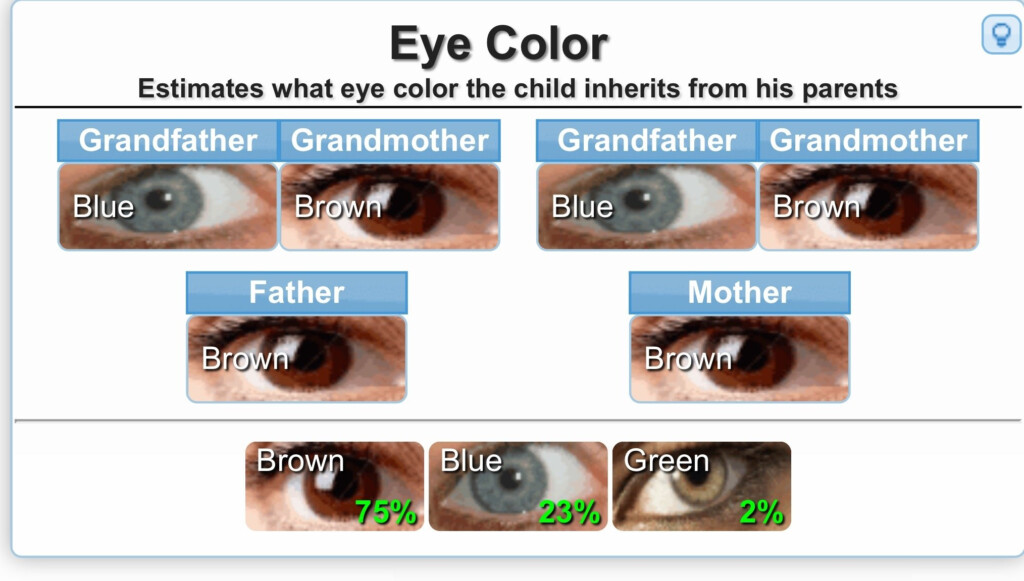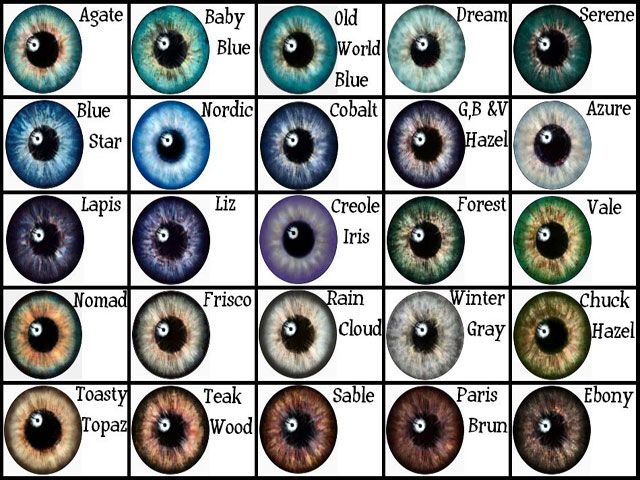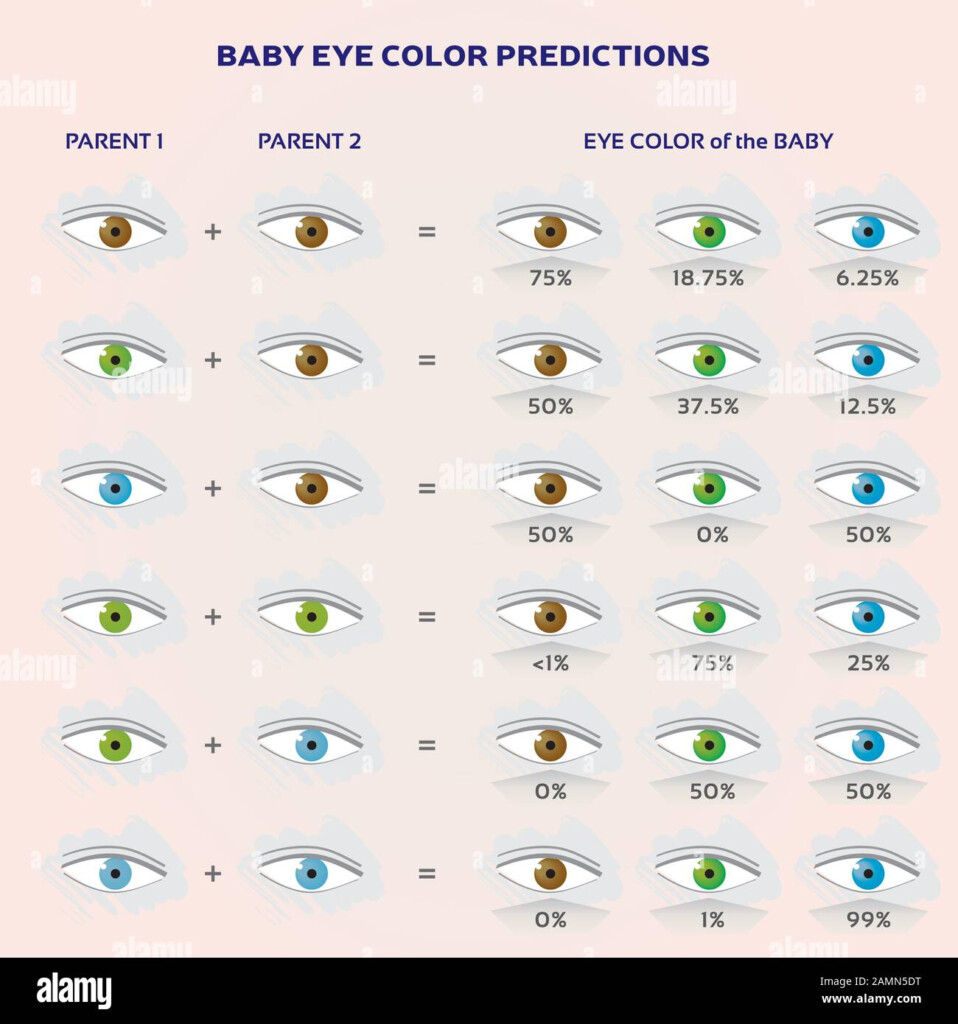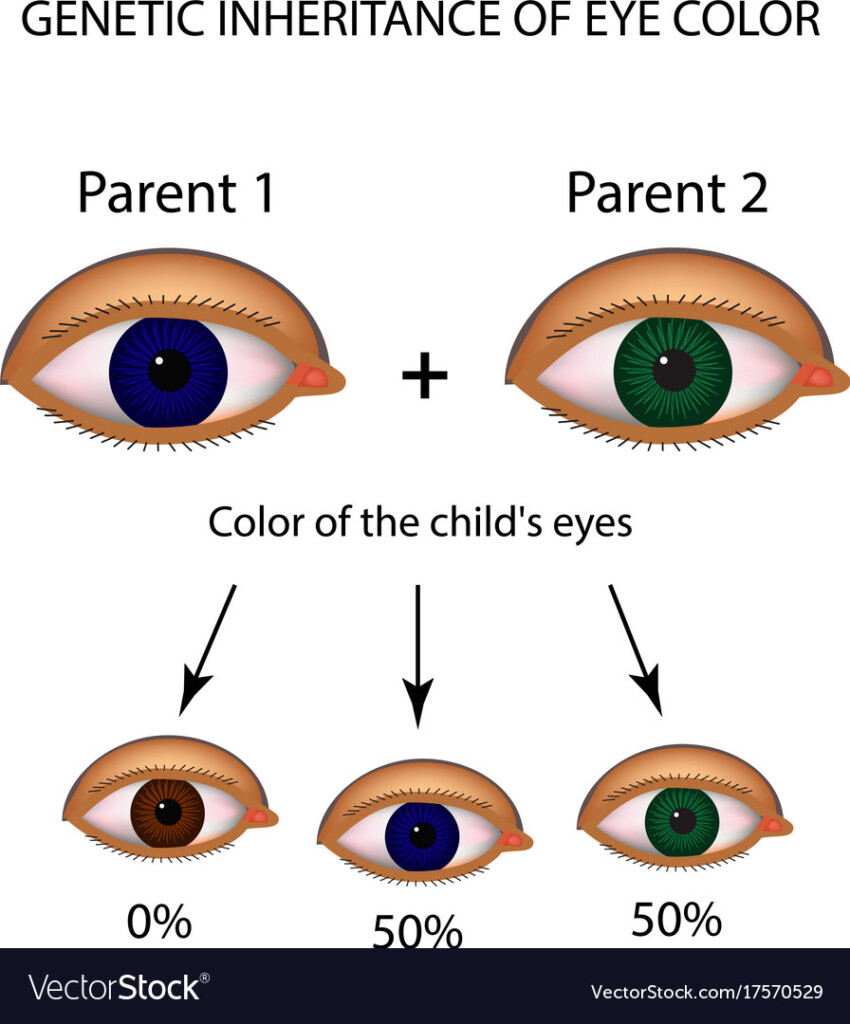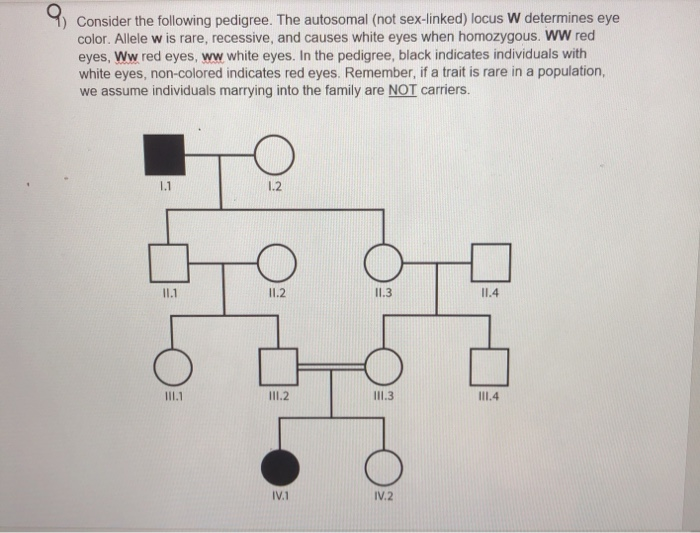Eye color is determined by variations in a person’s genes. The gene chart that determines eye color is a complex interplay between multiple genes. The most well-known gene associated with eye color is OCA2, which produces a protein that helps determine the amount of melanin in the iris. Another gene, called HERC2, controls the activity of the OCA2 gene. Variations in these and other genes can result in a wide range of eye colors, from blue to brown.
When a child is born, their eye color is often a combination of their parents’ eye colors. This is because each parent contributes one copy of each gene that determines eye color. For example, if both parents have brown eyes, it is more likely that their child will also have brown eyes. However, if one parent has blue eyes and the other has brown eyes, the child may have a mix of both colors.
Gene Chart Eye Color
Understanding Dominant and Recessive Genes
Eye color is determined by a combination of dominant and recessive genes. Brown eyes are considered a dominant trait, meaning that if a person has one gene for brown eyes and one gene for blue eyes, the brown eye gene will be expressed. Blue eyes, on the other hand, are a recessive trait, meaning that both genes must be for blue eyes in order for the trait to be expressed.
It is important to note that eye color can be influenced by other factors as well, such as environmental factors and hormonal changes. Additionally, eye color can change over time, particularly in infants and young children whose eyes may darken as they age.
How Gene Chart Eye Color Can Impact Health
While eye color is primarily determined by genetics, certain eye colors may be associated with an increased risk of certain health conditions. For example, research has shown that people with lighter eye colors, such as blue or green, may be more susceptible to certain types of eye diseases, such as age-related macular degeneration.
By understanding the gene chart that determines eye color, individuals can gain insight into their own eye color and potentially identify any underlying health risks associated with their eye color. It is always important to consult with a healthcare professional for personalized advice and recommendations regarding eye health.
Overall, the gene chart for eye color is a fascinating area of study that sheds light on the intricate genetic factors that contribute to our unique eye colors. By delving into the science behind eye color genetics, we can gain a greater appreciation for the diversity and complexity of human traits.
Download Gene Chart Eye Color
Eye Color Gene Probability Chart Writing Pinterest Eye Color
Eye Color Chart Eye Color Chart Eye Color Chart Genetics Eye Color
Eye Color Genetics Chart Eye Color Chart Eye Color Eye Color Chart
Recessive Dominant Gene Chart Eye Color Infoupdate
